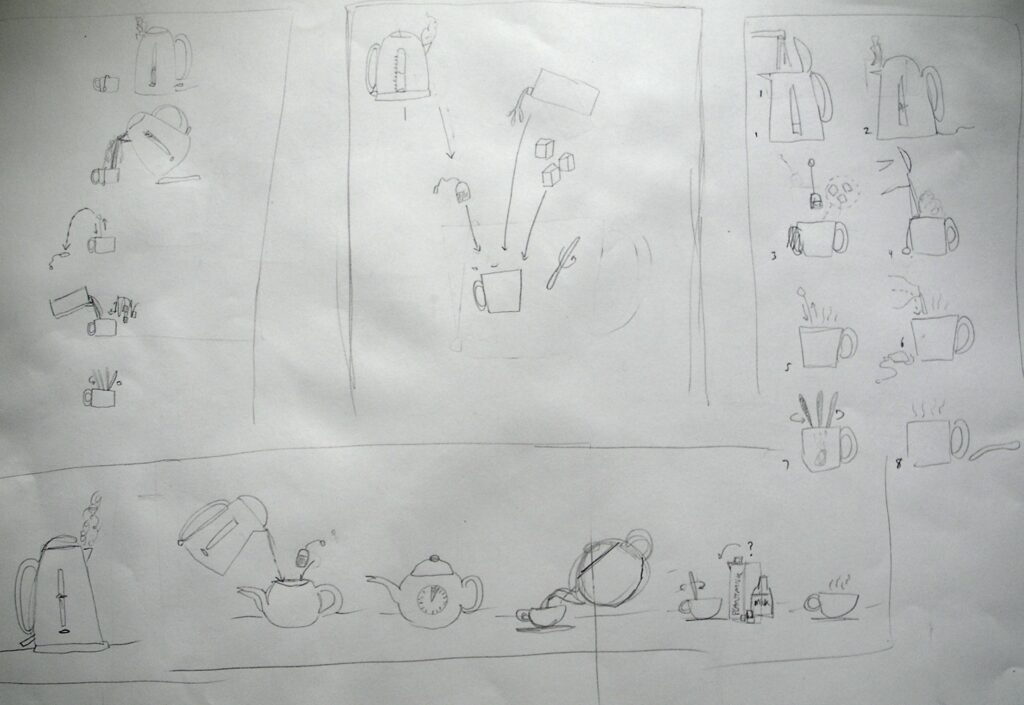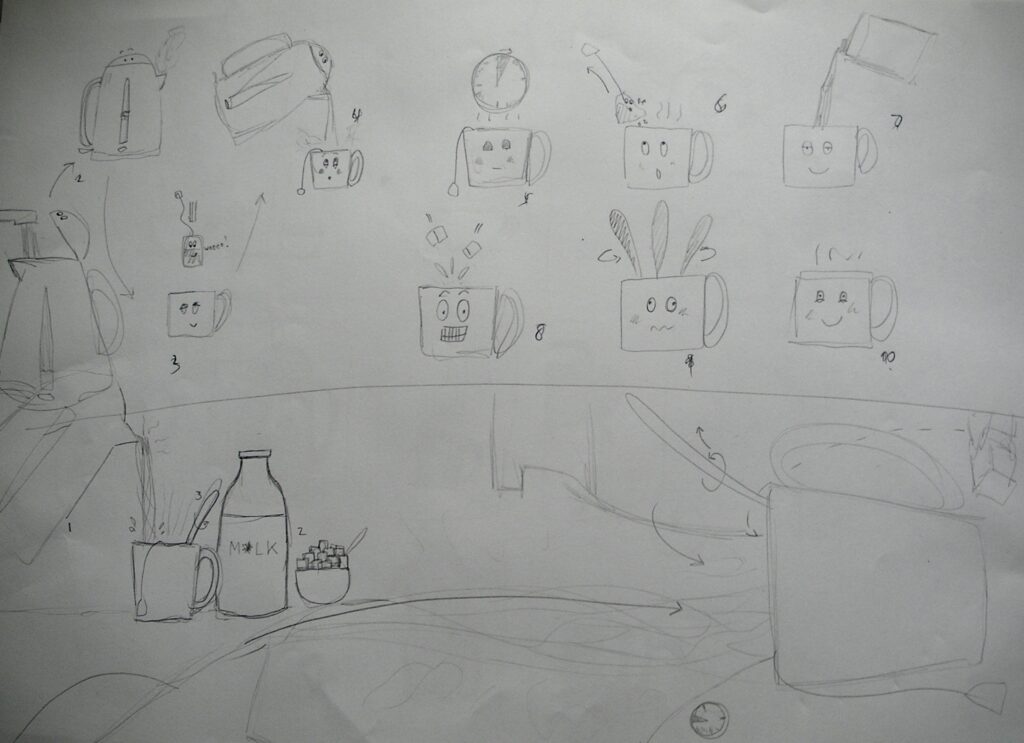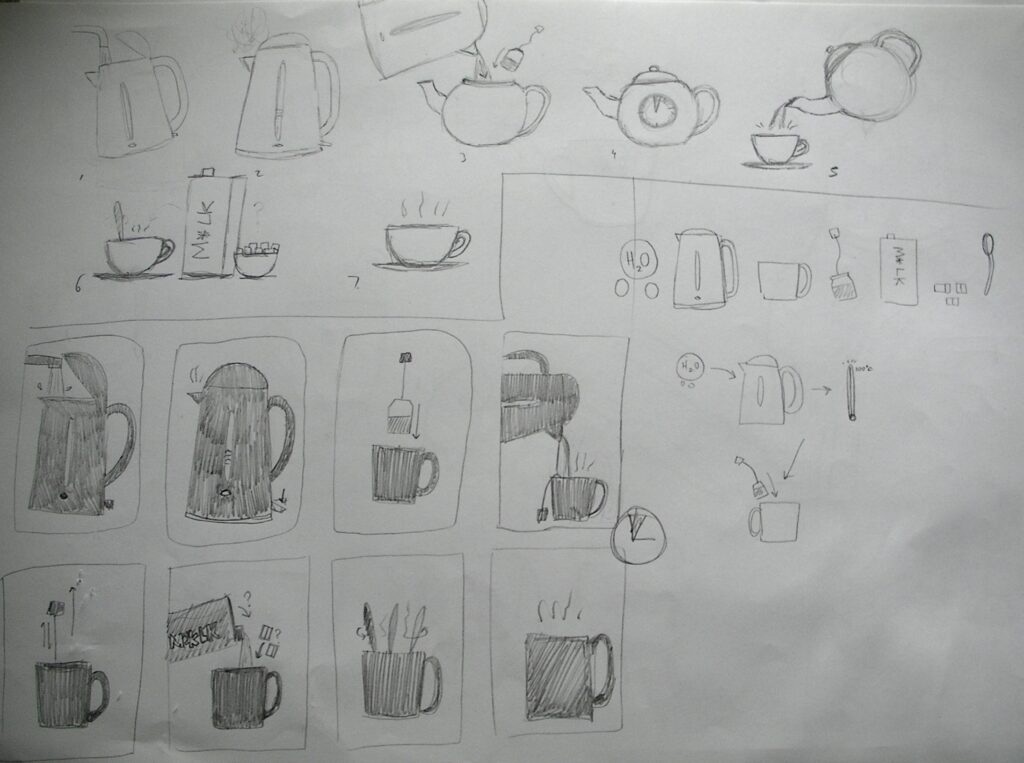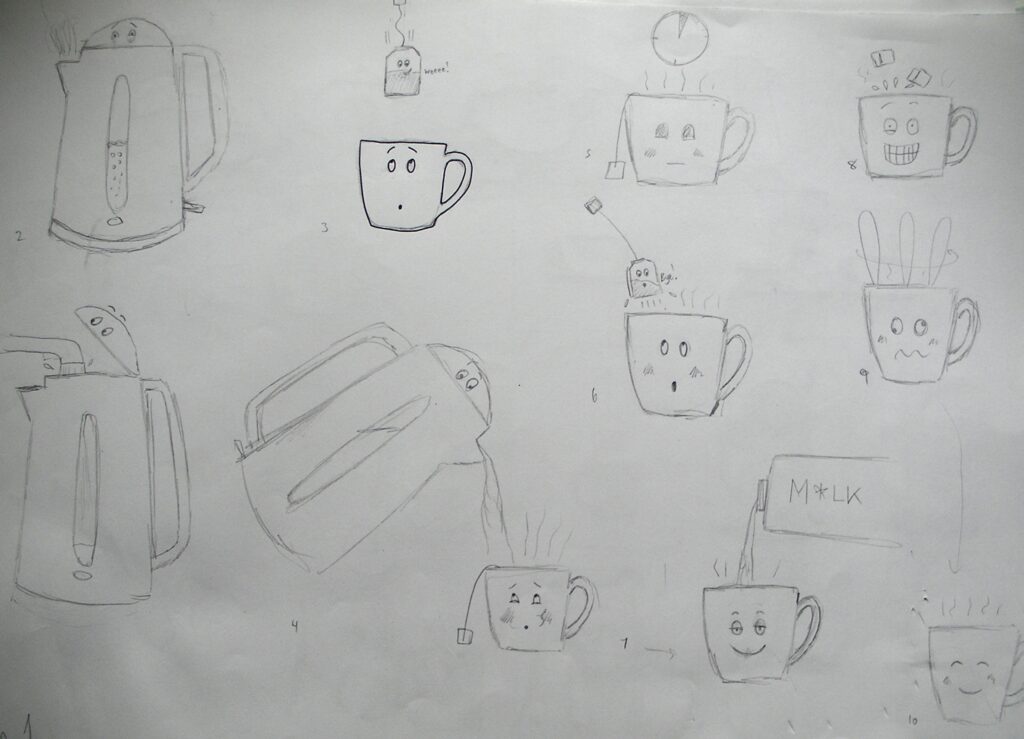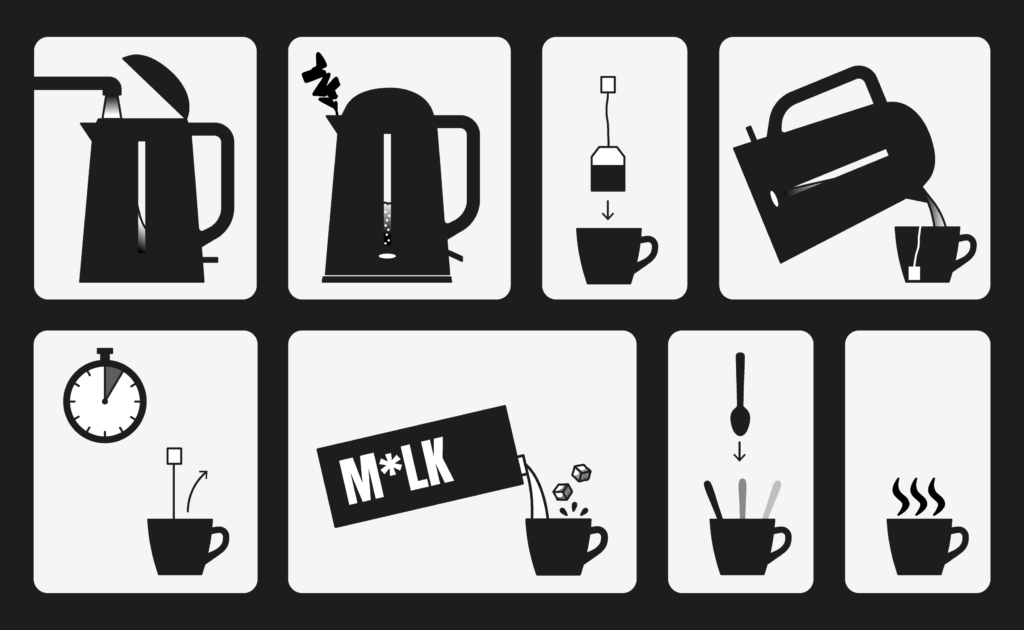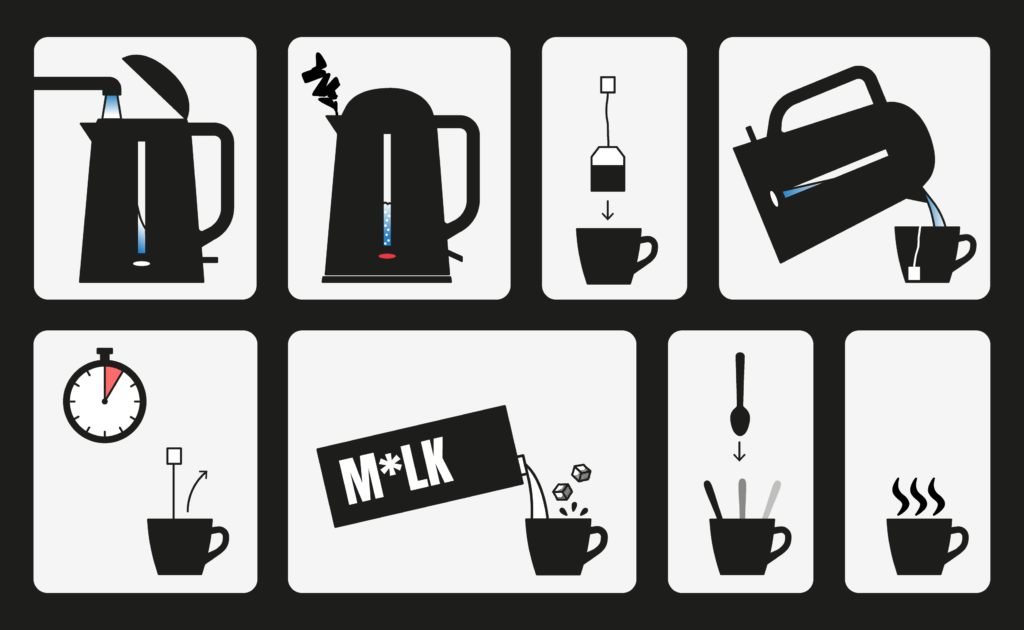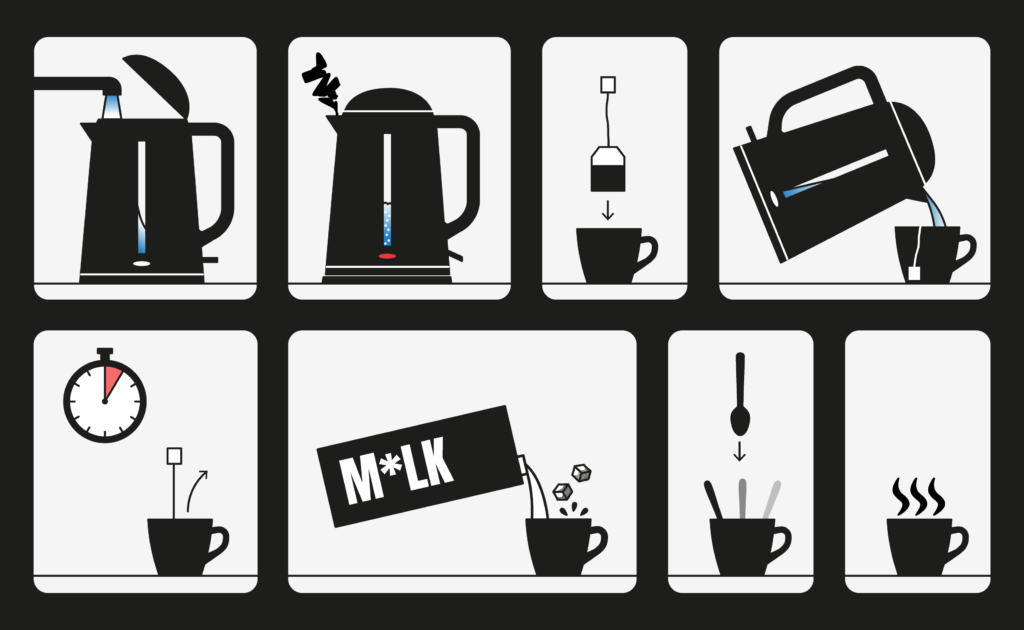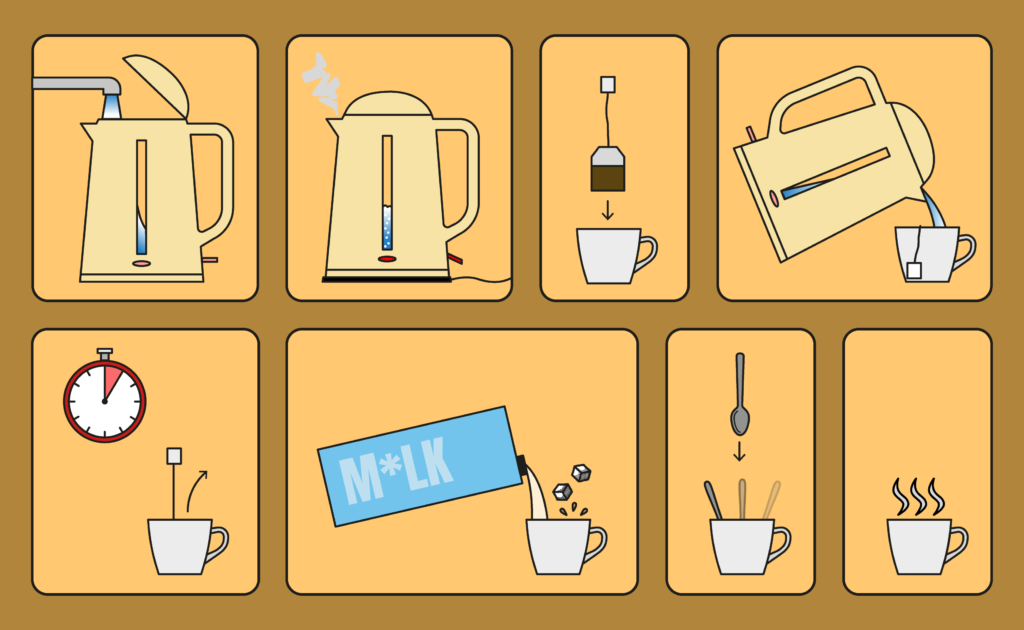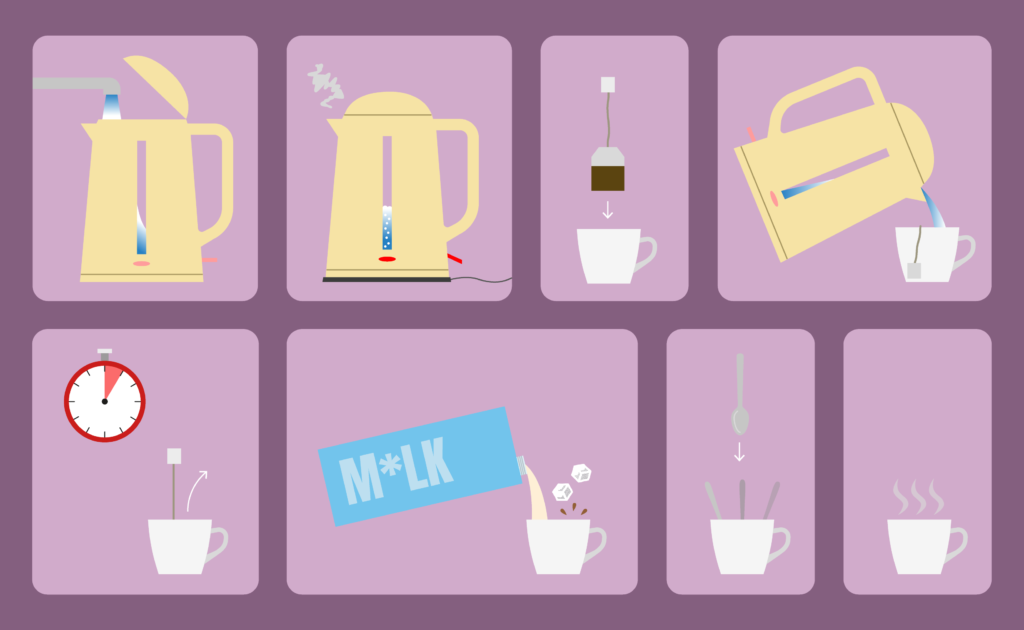Brief
Using the Internet, magazines, reference books, leaflets, brochures and flyers, make a collection of examples and reference materials that can help you with an illustration to fit one of the categories below:
Making a cup of tea
Getting to my house
Playing a tune on an instrument
Start by working out the information you need to impart and the steps involved. What are the main points? How many stages are there? Working at a fairly large scale, work out the space needs for each step. You may decide to have one picture that encompasses the whole process or you may want to break it down into a strip with clearly demarcated steps. Try as many possiblities as you can.
Be mindful of the hierarchy of the elements in the composition and the dynamics needed to draw the viewer’s eye from one stage to the other. Try to use as few words as possible. Best of all use none.
Keep all your sketches and notes in your learning log.
Before you start the final artwork take a critical look at your roughs and compare one element to another and be especially aware of what is happening in the immediate background of the image.
Decide on the tools and materials you will use for your illustration. If you use colour be aware of how it adds focus and help your communication process.
When you have finished, show it to other people to check it works both as an attractive illustration and in its main function – to give instructions. Record your findings in your learning log.
Research
I selected ‘Making a cup of tea’ for this exercise. I began by collating reference material of examples of instructional illustrations, initially general in content and then I looked for examples with making tea/coffee as the subject (as well as some ideas for the visual styles for drawing cups, kettles, etc).
I also read the section on instructional illustrations in the book Illustration: A Theoretical & Contextual Perspective (2007) by Alan Male.
From this initial research, a few notable examples I selected included:
Ruth Thomlevold – Coop, Hodder Headline and The Kitchen Gym – I liked the style of these illustrations. I noted the use of arrows in ‘Hodder Headline’ and the way the backgrounds of ‘The Kitchen’ illustrations does not interfere with the foreground, but still have detail in them. I felt this was achieved by using a monotone colour palette for the background.
Katie Shelley – Picture Cook – I would find the format of this recipe book much easier to use than the usual ones, which are mostly text. I thought the information was communicated really clearly with simplified illustrations, which still had an individual style and character about them. It is also a good example of using one illustration to show the entire process in a coherent way.
Saloni Dhawan – Instructional Illustrations – I thought this was a good example of illustrations expanding on the accompanying text, which could be quite difficult to visualise correctly in your head.
Shweta Humnabadkar – How to make tea in a jiffy – an example of the tea-making process in a visual form (although some text is included in the instructions). Although the style is not similar to what I would choose for my instructions, there were some elements that I thought I could incorporate, such as the use of varying opacity to indicate movement of the spoon.
Planning
I then thought out the materials and steps required to make a cup of tea. The materials needed would be as follows:
- Kettle
- Cup
- Teabag
- ‘Milk’
- Sugar/Sweetener
- Spoon
A cup of tea is quite a personal choice as everyone has their favourite way of how it is made and what is added to it. I do not drink tea (or coffee) myself, so I just decided to go with the standard method I would use if making a cup for someone else.
- Boil fresh water in kettle.
- Place teabag in cup.
- Pour water over tea bag.
- Leave tea bag in cup for a while, then remove it.
- Add ‘milk’/sweetener as desired.
- Stir.
- Drink.
Rough Designs
Next, I drew out some rough ideas of how to present this information visually. I decided to not use any text at all so I had to really think about how I could communicate the instructions logically without this. I did try to think a way of encompassing the whole process in one illustration, but I found it became too complicated and I was not able to show the process in an easy-to-understand way.
I began this part of the exercise by trying to work out how to best to display the information in an easy to read format, so that the order of each step was obvious.
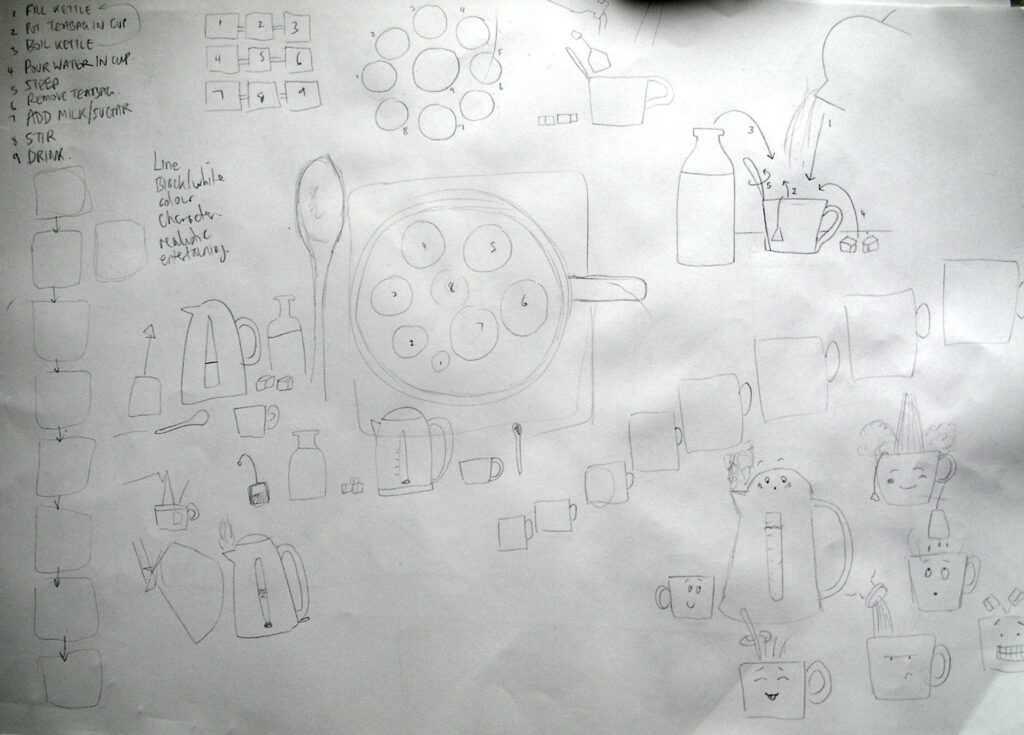
I then drew out illustrations for each of the steps.
As previously mentioned, I did attempt to include some versions which incorporated the entire process in one illustrations, but I could not work out how to do this successfully as, generally, each addition to the cup of tea is a separate step and not all added at once.
I then started fleshing out the most successful ideas.
I liked the idea of creating characters out of the kettle and cup, but in the end decided this might be too distracting from the purpose from the purpose of the brief, i.e. to instruct. I might work on this version at another time.
I then moved into Illustrator to work further on my chosen idea.

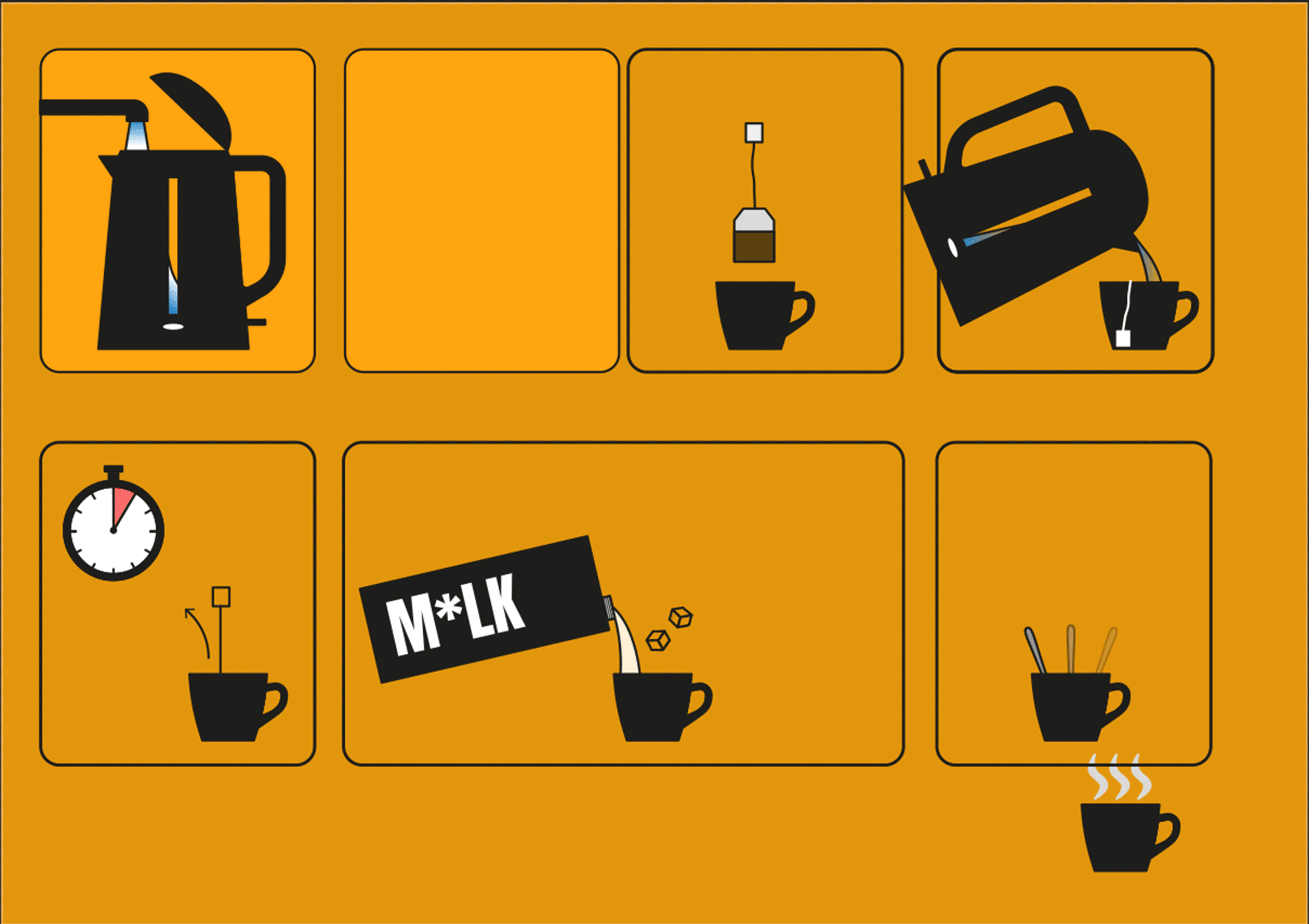
I wanted to keep the designs as simplified as possible and thought the graphical style was best suited for this. I initially limited the colour palette, but then decided to try versions that did incorporate some.
Final Designs
I made a version that was completely black and white (with the use of opacity for effect).
I then thought about how limited colour could be used to highlight the key aspect in some of the steps.
Next, I added a line to indicate a surface so the kettle/cup were not floating in the air (although I realise that the first one should be over a sink so this does not look right).
I then tried a colour version, which along with the black outlines made the instructions look like a comic strip. I did like the addition of colour. I made the border a brown to try and resemble the colour of tea.
Finally, I removed the outlines and changed the background colours to purple, which I felt blended well with the illustrations – not competing for attention or clashing. I have been wanting to try using less outlines as sometimes I feel the result looks more sophisticated. I was quite pleased with the outcome and thought this was perhaps the most visually pleasing of the designs.
I showed my designs to a few people who said they liked the design and could follow the instructions. The favourite versions were the black and white one with added colour and the purple one.
I was not expecting to find this exercise so difficult! I really had to think carefully about each step in the process and how to communicate the information clearly without using words. I was quite pleased with the final version, but would still like to return at some point to work on the character design idea. I also could have experimented more with the layout of the design, but wanted to try and find a balance between being aesthetically-pleasing and fulfilling the purpose of being a set of instructions.
References
Male, A. (2007). ‘The Role of Illustration: Documentation, Reference and Instruction’ in Illustration: A Theoretical & Contextual Perspective. London: Thames & Hudson, pp. 86-116.
Dhawan, S. (2017). Instructional Illustrations. Available at: https://www.behance.net/gallery/59243041/Instructional-Illustrations (Accessed 03 August 2020).
Humnabadkar, S. (n.d.). Infographic – How to make tea in a jiffy. Available at: https://www.pinterest.co.uk/pin/659073726711154580 (Accessed 03 August 2020).
Shelley, K. (n.d.). Picture Cook. Available at: http://www.katieshelly.art/portfolio/picture-cook/ (Accessed 02 August 2020).
Thomlevold, R. (2019). Portfolio. Available at: http://www.thomlevold.com (Accessed 02 August 2020).
Zuraw, L. (2013). ‘Picture Cook’: Drawings are the Key Ingredients in these Recipes. Available at: https://www.npr.org/sections/thesalt/2013/05/16/184545709/picture-cook-drawings-are-the-key-ingredients-in-these-recipes (Accessed 02 August 2020).
